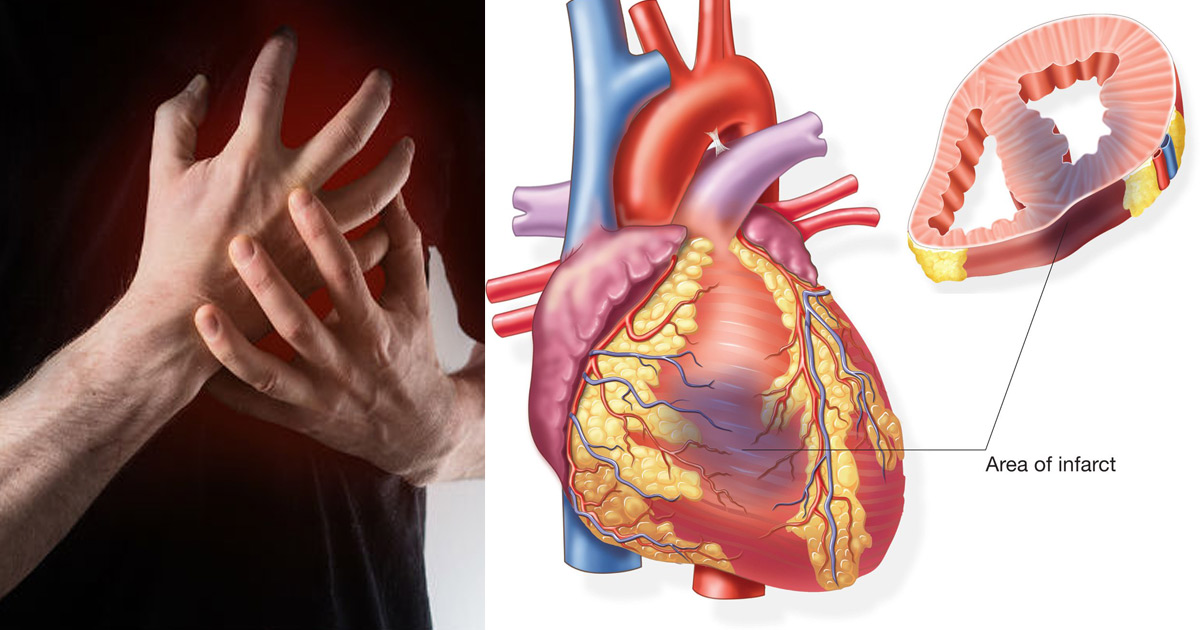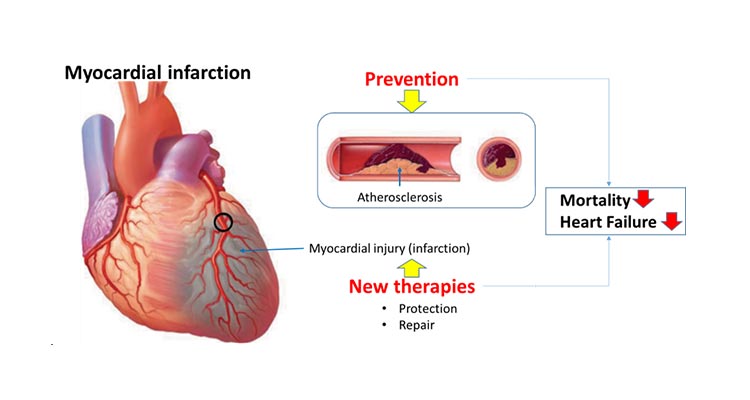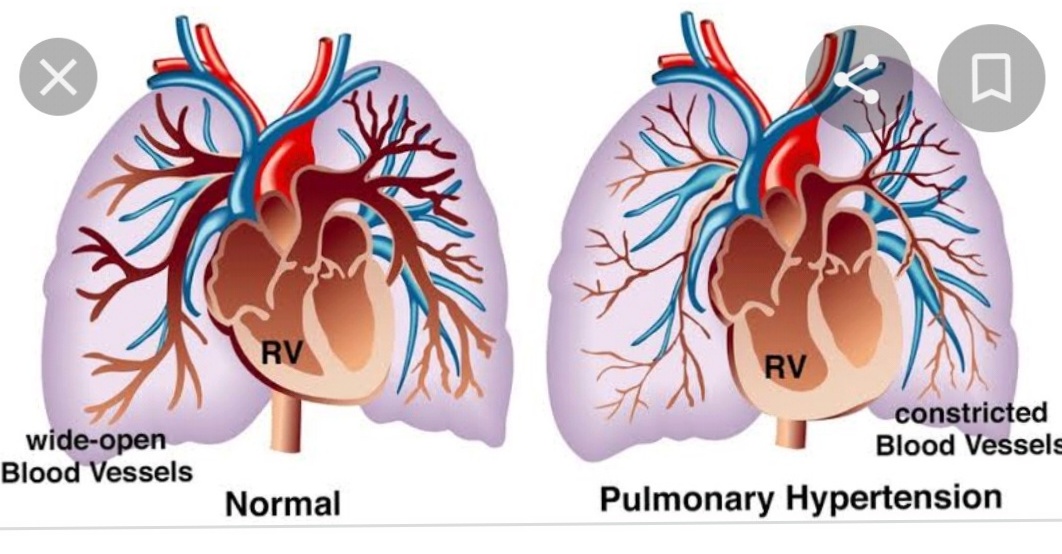Myocardial Infarction-various aspects-
Myocardial Infarction (Heart Attack)
Definition
Myocardial infarction (MI), commonly known as a heart attack, is a life-threatening condition that occurs when blood flow to a part of the heart muscle (myocardium) is severely reduced or completely blocked. This interruption in blood supply leads to ischemia and the eventual death (necrosis) of heart muscle tissue. MI is considered a medical emergency and requires immediate treatment to reduce damage and save life.


Causes
The most common cause of myocardial infarction is coronary artery disease (CAD), which is characterized by the narrowing or blockage of the coronary arteries due to atherosclerosis—the buildup of fatty plaques on artery walls.
Other less common causes include:
- Coronary artery spasm (temporary narrowing of the coronary artery)
- Coronary embolism (a clot or debris blocks a coronary artery)
- Spontaneous coronary artery dissection (SCAD)
- Severe anemia or hypoxia leading to reduced oxygen supply
- Drug abuse (especially stimulants like cocaine or methamphetamine)
- Aortic dissection extending to coronary arteries
If Any Patient of ENT Requires Any Surgery, Opd Consultation Or Online Consultation In Clinic of ENT Specialist Doctor Dr. Sagar Rajkuwar ,He May Contact Him At The Following Address-
Prabha ENT Clinic, Plot no 345,Saigram Colony, Opposite Indoline Furniture Ambad Link Road ,Ambad ,1 km From Pathardi Phata Nashik ,422010 ,Maharashtra, India-Dr. Sagar Rajkuwar (MS-ENT), Cell No- 7387590194, 9892596635
Risk Factors
Several risk factors increase the chance of developing MI, including:
- Modifiable: Smoking, hypertension, high cholesterol, diabetes, obesity, sedentary lifestyle, unhealthy diet, and excessive alcohol intake.
- Non-modifiable: Age (men over 45, women over 55), family history of heart disease, male gender, post-menopausal status in women.
Pathophysiology
The process leading to myocardial infarction typically begins with the rupture of an atherosclerotic plaque in a coronary artery. This rupture triggers platelet aggregation and clot (thrombus) formation, leading to acute coronary artery blockage. As a result:
1. The affected heart muscle area becomes deprived of oxygen.
2. Within 20-30 minutes, myocardial cells begin to die.
3. If blood flow is not restored, necrosis extends through the entire thickness of the myocardium in 4–6 hours.
This infarction triggers inflammatory responses and leads to structural and functional changes in the heart.
Types of Myocardial Infarction
1. ST-Elevation Myocardial Infarction (STEMI):
- Complete blockage of a coronary artery.
- Shows ST-segment elevation on ECG.
- Requires urgent reperfusion therapy (PCI or thrombolytics).
2. Non-ST Elevation Myocardial Infarction (NSTEMI):
- Partial blockage of a coronary artery.
- ECG does not show ST elevation.
- Elevation of cardiac biomarkers confirms myocardial injury.
3. Silent Myocardial Infarction:
- Occurs without noticeable symptoms.
- Common in diabetics and elderly patients.
For Update On Further Important Health Related Topics And Frequently Asked Questions On Health Topics By General Population Please Click On The Link Given Below To Join Our WhatsApp Group –
https://chat.whatsapp.com/Lv3NbcguOBS5ow6X9DpMMA
Symptoms


The classic symptoms of a myocardial infarction include:
- Chest pain or discomfort: Often described as pressure, squeezing, or fullness; may radiate to the left arm, jaw, back, or neck.
- Shortness of breath
- Sweating (diaphoresis)
- Nausea or vomiting
- Lightheadedness or dizziness
- Palpitations
- Fatigue
Notably, women, older adults, and diabetics may experience atypical symptoms like:
- Epigastric pain
- Extreme fatigue
- Indigestion-like discomfort
- Anxiety or confusion
Diagnosis
Early diagnosis is critical. Key diagnostic tools include:
1. Electrocardiogram (ECG or EKG):
- Identifies ST-segment elevation, T-wave changes, or Q waves.
2. Cardiac Biomarkers:
- Troponin I and T are highly sensitive and specific for myocardial injury.
- Creatine kinase-MB (CK-MB) may also be used.
3. Echocardiography:
- Evaluates heart wall motion and detects functional damage.
4. Coronary Angiography:
- Visualizes coronary artery blockages.
Chest X-ray and blood tests (CBC, lipid profile) may aid in assessing overall health.
DISCLAIMER-Some patients go to net and directly take treatment from there which can lead to catastrophic consequences-Then- Many people ask then why to read all this text -the reason is that it helps you to understand the pathology better ,you can cooperate with treatment better ,your treating physician is already busy with his patients and he does not have sufficient time to explain you all the things right from ABCD ,so it is always better to have some knowledge of the disease /disorder you are suffering from.
Treatment
Immediate treatment aims to restore blood flow, minimize heart damage, and prevent complications.
Initial Management (MONA):
- Morphine – for pain relief and anxiety reduction
- Oxygen – if oxygen saturation is low
- Nitroglycerin – to relieve chest pain
- Aspirin – to inhibit platelet aggregation
Definitive Treatments:
1. Reperfusion Therapy:
- Primary Percutaneous Coronary Intervention (PCI): Angioplasty with stenting; preferred method within 90 minutes of hospital arrival.
- Thrombolytic Therapy: Used when PCI is not available; drugs like alteplase dissolve clots.
2. Medications:
- Antiplatelets: Aspirin, clopidogrel
- Anticoagulants: Heparin or enoxaparin
- Beta-blockers: Reduce oxygen demand and arrhythmias
- ACE inhibitors or ARBs: Improve heart function
- Statins: Lower cholesterol and stabilize plaques
- Nitrates: For ongoing chest pain
3. Coronary Artery Bypass Grafting (CABG):
- Surgical option for multiple or complex blockages.
Complications


If untreated or delayed, MI can lead to:
- Arrhythmias: Ventricular fibrillation, atrial fibrillation
- Heart failure
- Cardiogenic shock
- Myocardial rupture
- Pericarditis (inflammation of the heart lining)
- Recurrent infarction
- Death
Prevention
Preventing myocardial infarction involves both lifestyle modifications and medical management:
Lifestyle Changes:
- Quit smoking
- Eat a heart-healthy diet (low in saturated fats, salt, and sugar)
- Exercise regularly
- Maintain a healthy weight
- Manage stress
Medical Management:
- Control blood pressure, diabetes, and cholesterol
- Take prescribed medications regularly
- Regular medical checkups and monitoring
Rehabilitation
Cardiac rehabilitation is a structured program post-MI to help individuals recover. It includes:
- Supervised exercise
- Education about heart-healthy living
- Psychological counseling
- Medication adherence support
Prognosis
Prognosis depends on the extent of heart muscle damage, timeliness of treatment, and presence of complications. With modern treatment strategies, survival rates have improved significantly. However, a previous MI increases the risk of future heart attacks, heart failure, and arrhythmias.
Conclusion
Myocardial infarction is a critical condition that requires prompt recognition and treatment. Education about warning signs, risk factor management, and access to timely care are key to improving survival and reducing complications. Through lifestyle changes, adherence to medications, and cardiac rehabilitation, individuals can lead a productive life after a heart attack.
If any patient has any ENT -Ear nose throat problems and requires any , consultation ,online consultation ,or surgery in clinic of ENT specialist Doctor Dr Sagar Rajkuwar ,he may TAKE APPOINTMENT BY CLICKING ON THE LINK GIVEN BELOW-
Clinic address of ENT SPECIALIST doctor Dr Sagar Rajkuwar-
Prabha ENT clinic, plot no 345,Saigram colony, opposite Indoline furniture Ambad link road ,Ambad ,1 km from Pathardi phata Nashik ,422010 ,Maharashtra, India-Dr Sagar Rajkuwar (MS-ENT), Cel no- 7387590194 , 9892596635



